Date Masamune and the "Date no Miyako"
- Home
- Date Masamune and the "Date no Miyako"
"Date no Miyako" is a sake with the motif of Date Masamune's "Date Battle Coat".
Inspired by the great ambitions of Date Masamune 400 years ago, Yamatogura brews and sells "Date no Miyako Junmai Daiginjo" and "Date no Miyako SWEET Junmai Sake," sakes with the motif of the "Date jinbaori."
Made from a thin woolen fabric in the noble color of purple, it features the Date clan's "bamboo and sparrow" crest in the center of the back, and five-color (blue, red, yellow, white, and black) polka dots representing stars inlaid on it. Even 400 years later, the stylish design is still appealing, and the color scheme is very harmonious, making it a beautiful jinbaori that can be said to be wonderful even when viewed from a modern perspective.
This pattern, which will surely be passed down to the present and to the future, was chosen as the motif for the label design. It doesn't feel out of place in the modern era, and you will probably find it refreshing in a way that has never been seen before.
Purple back board five-color polka dot pattern jinbaori
Date Masamune's life spanned the end of the Sengoku period and the early Edo period, a period influenced by Nanban culture, which saw the use of new materials and techniques such as woolen cloth and velvet, and the creation of elaborately designed clothing.
Among them, the "Purple Raglan Backboard Five-Color Polka Dot Pattern Jinbaori" features large and small five-colored polka dots scattered from the hem to the middle of the sleeves on a raglan backboard, a thinner woolen fabric than purple raglan. The polka dots are inlaid with kiribame and are trimmed with uchihimo cords of the same color. Additionally, the Date clan crest, "bamboo and sparrows," is embroidered in large gold thread on the back.
Based on the shape and stitching, it is thought to date from around the later years of Date Masamune's life.
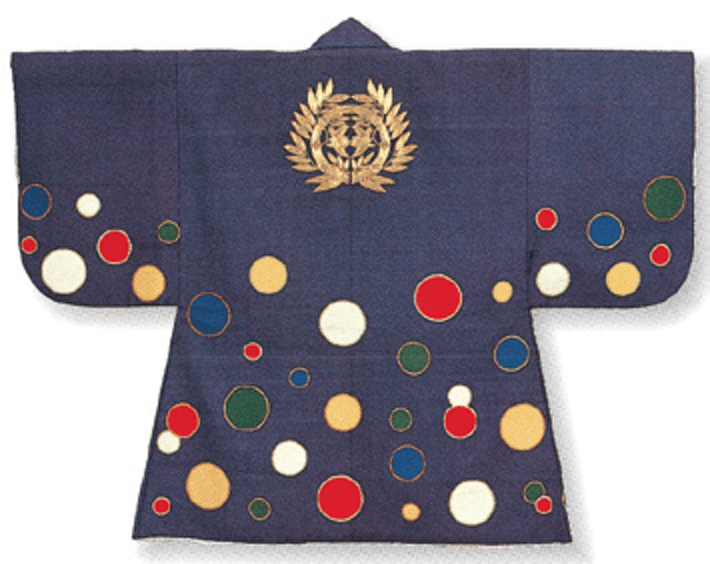
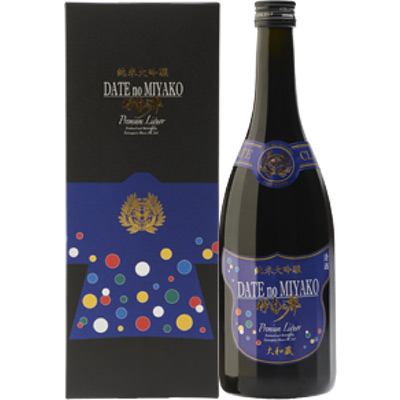
Date no Miyako Junmai Daiginjo
Yamada Nishiki rice, which is ideal for sake brewing, is luxuriously polished and slowly fermented at low temperatures.
This Junmai Daiginjo sake has a refined, gentle aroma and mellow flavor, and is made by a Nanbu master brewer using traditional Nanbu-style methods.
Please purchase the product here.
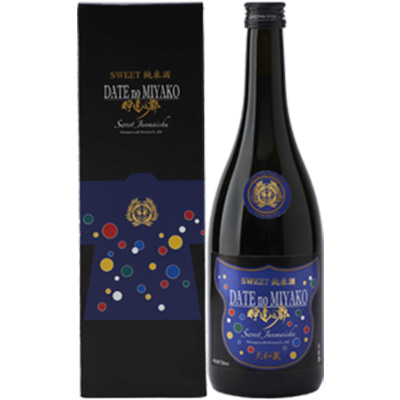
Date no Miyako SWEET Junmai Sake
When you put it in your mouth, a gentle sweetness and a light acidity swell, and the sweet and sour taste like fruit wine or yogurt spreads throughout your mouth.
The unique flavor goes well with spicy ethnic and Chinese dishes. It is an excellent product that boasts a very sweet yet clean and refreshing taste.
Please purchase this product at a Costco store. This product is exclusive to Costco.
This time, I would like to look back on the history of Date Masamune and share the thoughts that went into "Date no Miyako Junmai Daiginjo" and "Date no Miyako SWEET Junmai Sake."
The background behind Date Masamune's overseas ambitions
During the Sengoku period, the Japanese shared the time known as the "Age of Discovery" with the rest of the world.
Not to be outdone by Magellan or Columbus, the Japanese were also trying to soar out into the world.
As exemplified by Yamada Nagamasa's advance into Siam (present-day Thailand) and the Wokou (pirates, private traders and merchants who were active in the coastal areas and parts of the interior of the Korean Peninsula and mainland China, as well as various regions of East Asia), the Japanese of the time were dynamic and active in Southeast Asia.
In the midst of all this, a Japanese person finally appeared who wanted to invade the European continent.
The person who sent this expedition was Date Masamune (1567-1636), who was Hasekura Tsunenaga (1571-1622), a samurai from the Sendai domain.
It is said that Masamune had ambitions of unifying the country, but this project was overtaken by Toyotomi Hideyoshi, who suddenly appeared in central Japan (His rapid rise to fame, as recorded in the Taikoki, must have come as a bolt from the blue to Masamune).
Real power in Japan later passed to Tokugawa Ieyasu, but Masamune still did not give up on his ambition to rule the country, and there is a theory that he sent Hasekura Tsunenaga to Spain (present-day Spain) to form a military alliance and have an allied European army land in Japan and overthrow the Tokugawa shogunate.
He also apparently had a vision that would have astonished other daimyo if they had heard of it: to establish a global trading nation and turn the Date domain into one of Japan's wealthiest trading zones.
In other words, Date Masamune and Hasekura Tsunenaga had a grand plan to turn the Sendai domain into an international nation through global trade, enrich the country and strengthen its military, and seriously team up with Spain to overthrow the Tokugawa shogunate.
"Look! Is there anyone else in Japan who can conceive such a grand vision?! Is there anyone else besides us who can accomplish this?!" Masamune and Tsunenaga probably wanted to shout this out loud.
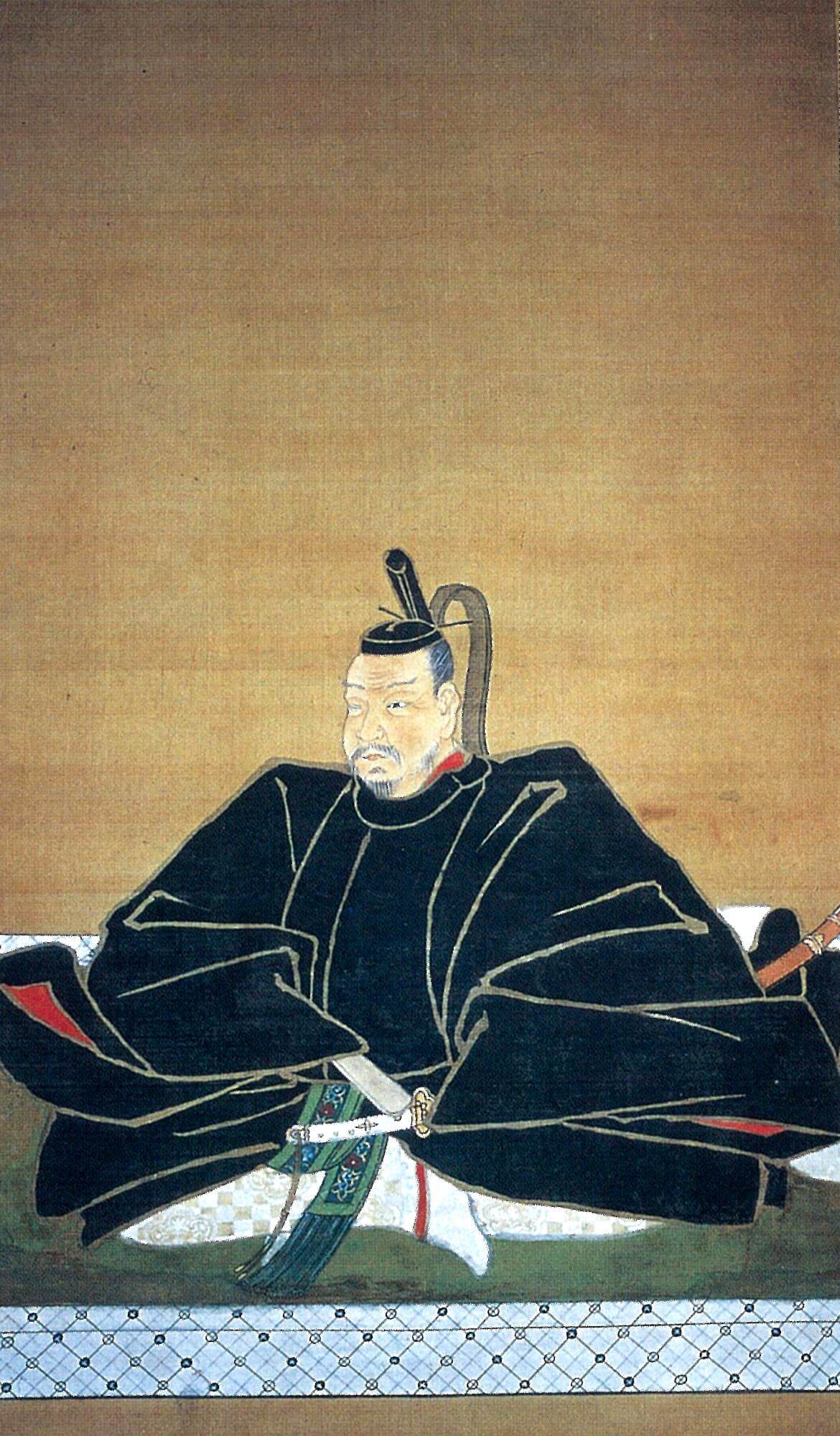
The Keicho Embassy to Europe sets sail
In 1613, after a failed voyage the previous year, Hasekura Tsunenaga finally became the first Japanese to set out on a grand voyage to Europe, departing from Tsukinoura on the Oshika Peninsula (Ishinomaki City, Miyagi Prefecture) on a sailing ship called the San Juan Bautista.
At the time, the Pacific Ocean was feared by sailors as a rough sea, and domestic shipping routes were concentrated in the Sea of Japan (later known as the Taru-kaisen and Hishigaki-kaisen).
Tsunenaga left Ishinomaki and crossed the Pacific Ocean, overcoming many huge waves like those painted by Katsushika Hokusai, to reach Acapulco in New Spain (present-day Mexico), from where he crossed New Spain and then continued on across the Atlantic Ocean.
The difficulty of this journey must have been unimaginable, even more difficult than our modern-day journey around the world on foot (this was a time when travel guides were not even an option).
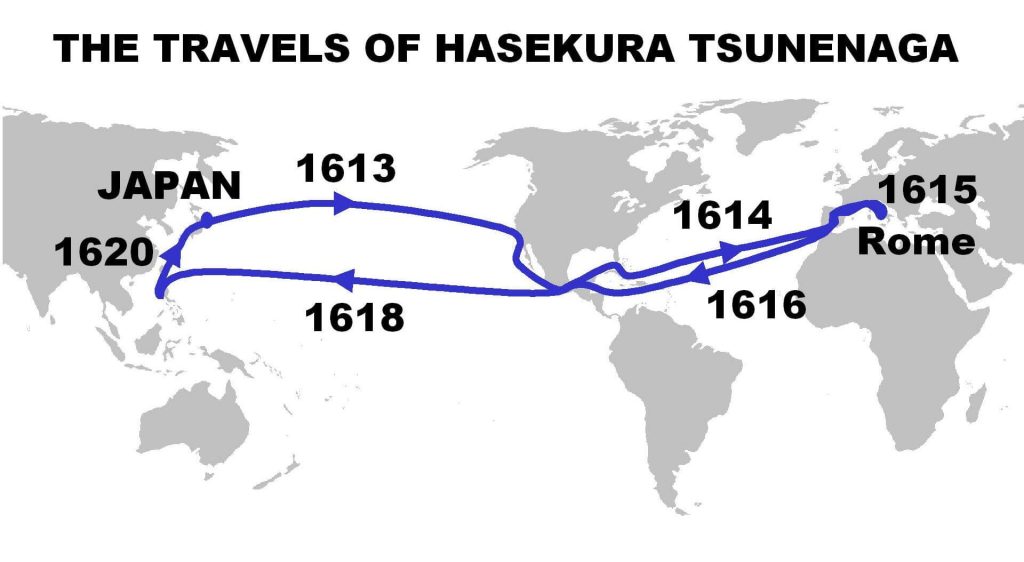
Tsunenaga traveled to Europe with a dream of such grand scale entrusted to him, spent several years there, and Masamune continued to wait for his return.
However, Masamune's grand vision was completely shattered as national isolation and Christianity were banned, resulting in an unexpected, closed Japan.
Hasekura Tsunenaga was a hero who had overcome countless hardships that no one had ever experienced before, and when he returned, the Date clan was expected to prosper, with Portuguese ships and Japanese sailing ships passing through Ishinomaki Port, and people and abundant products from all over the world flowing through the domain.
The grand vision that could change the destiny of Japan was shattered, and the world had changed into one in which it was no longer permitted to share a single word of what he had seen with others.
What changed this was the Tokugawa family, who had established a solid system and were trying to build a world of peace for the next 260 years.
Far from being a hero when he returned to Japan, Tsunenaga hid himself in the deep countryside so as not to be seen by anyone, gazing out at the rice paddies, farmland and mountains every day, before passing away with only two years left of his life.
"What has my life been for?!"
Tsunenaga must have been crying tears of blood and wailing like this.
Masamune had no choice but to bow his head and respect the Tokugawa's rule over the country, while keeping his grandiose vision, which other daimyo could not have even imagined, deep in his heart.
Masamune Date's Thoughts
In his later years, Date Masamune composed the famous poem, "My youth on horseback has passed, the world is peaceful and my hair is gray. Heaven has forgiven my remaining body. What could I do without enjoying it?" in which he quietly reflected on his life as one of the "Heroes of the Warring States Period."
However, Tsunenaga, who "gave his life to the test of time on board," passed away in silence without leaving behind any written record.
The grand romance that Masamune and Tsunenaga had tried to realize was forced to fall into a long slumber, remaining unfinished.
Masamune's haori coat still exists, and it appears as if the magnificent dreams he once had were abstracted and dyed directly onto it.
But is it really okay to leave such dreams lying dormant forever?
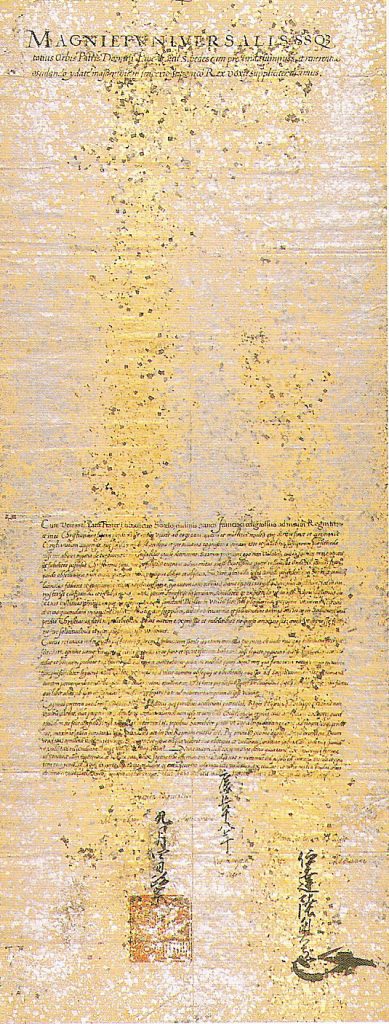
400 years of timeless passion in sake
"Date no Miyako Junmai Daiginjo" and "Date no Miyako SWEET Junmaishu" are sakes that feature a haori coat on the packaging that seems to depict the dreams of the "Danshi" Masamune. They are proud of this sentiment, and are made using traditional Nanbu school methods.
At Yamatogura in Kurokawa-gun, Miyagi Prefecture, where Masamune's grand dream has remained dormant for 400 years, we keep the flame of romance burning in our hearts as we work together with Masamune to "evolve" in sake brewing.



